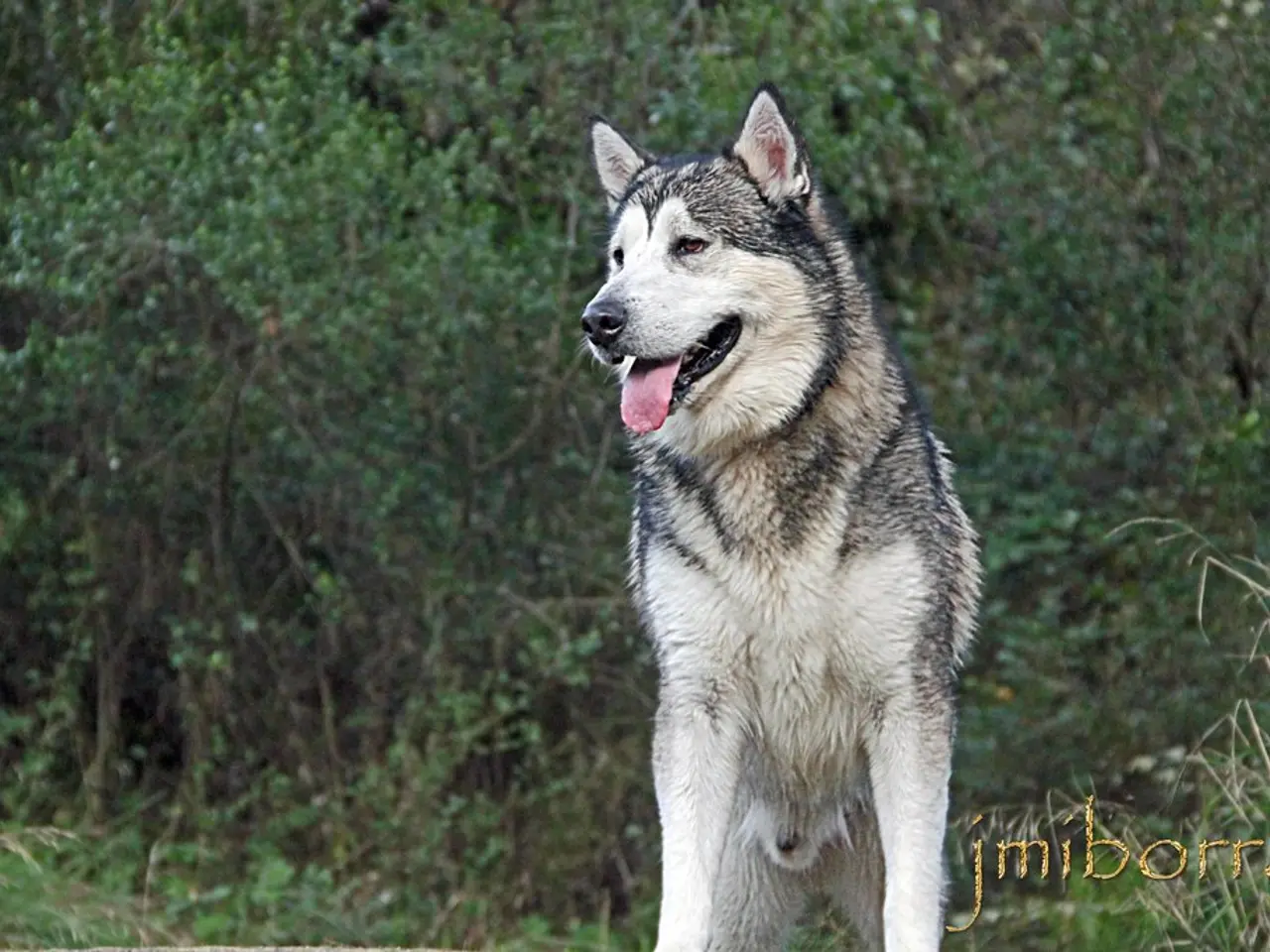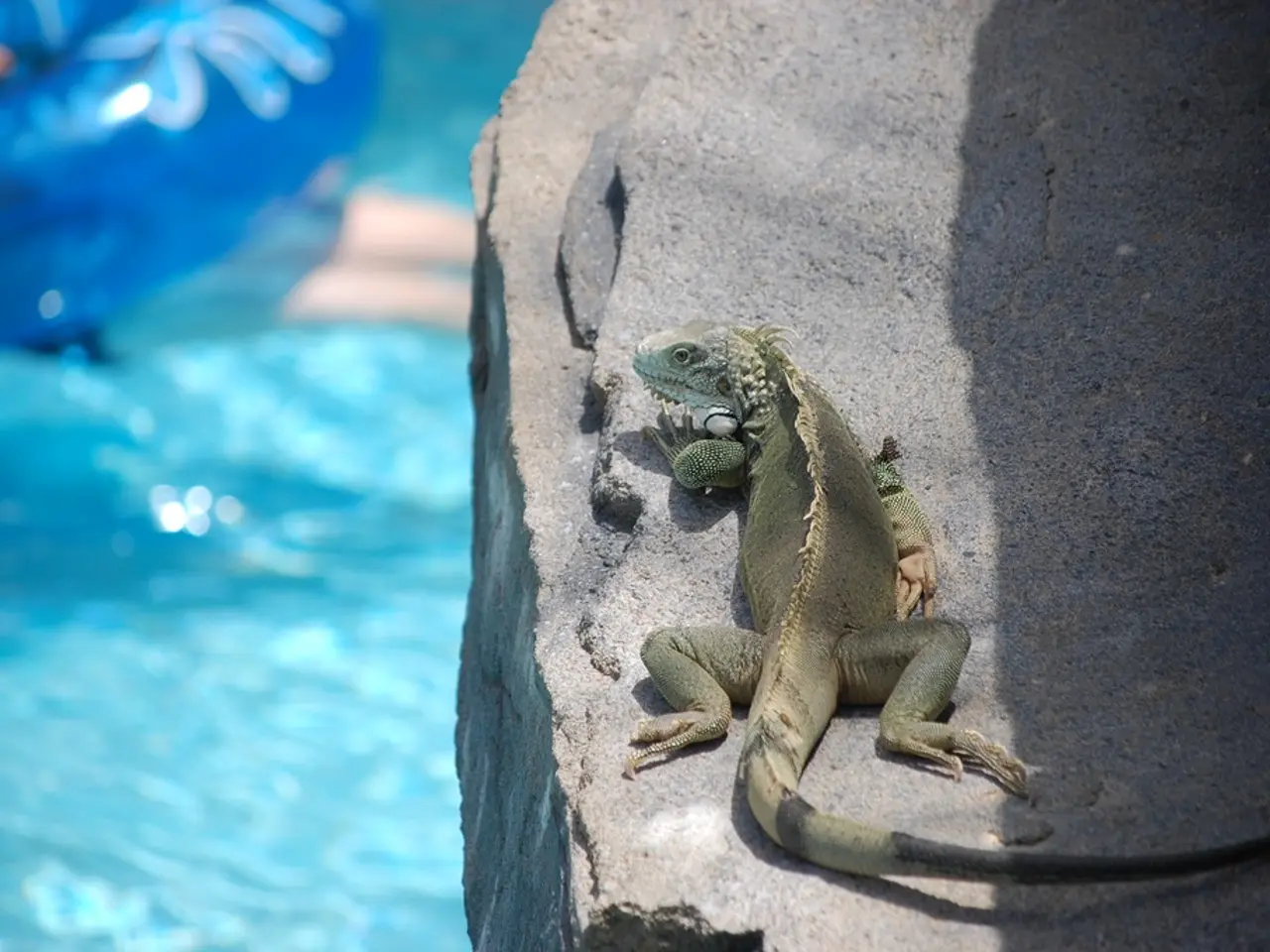Researchers modify wolf genetics to create white-furred, heavily-jawed wolves reminiscent of the long-extinct dire wolves.
Genetically Engineered Dire Wolves and Red Wolf Cloning: A New Era in Conservation and Scientific Advancement
In a groundbreaking development, Colossal Biosciences, a biotechnology company, has made strides in recreating the physical and functional traits of extinct dire wolves using CRISPR gene-editing technology. Three genetically engineered wolves, resembling dire wolves, are currently housed in a secure location in the U.S.
The process involves isolating epidermal progenitor cells (EPC) from gray wolf blood, rewriting 14 key genes in the cell nucleus to express 20 dire wolf traits, and producing 45 edited embryos implanted into surrogate dogs. These pups, named Romulus, Remus, and Khaleesi, are being hailed as the "first dire-wolf cubs in 12,000 years."
However, it's crucial to note that these genetically engineered animals are not considered true dire wolves by independent experts and conservation groups. They are labelled as phenotypic proxies since their genome is primarily from gray wolves with edits. The International Union for Conservation of Nature’s Species Survival Commission Canid Specialist Group has stated that these engineered wolves do not meet definitions for dire wolves or proxies under current guidelines and do not restore extinct ecosystem functions.
In a separate project, Colossal Biosciences has cloned four red wolves using blood drawn from wild wolves of the critically endangered red wolf population of the southeastern U.S. The aim of this cloning is to bring more genetic diversity into the small population of captive red wolves, which scientists are using to breed and help save the species.
The genetically engineered wolves, similar to dire wolves, will not learn how to hunt large game like elk or deer as they won't have opportunities to watch and learn from wild dire wolf parents. Whatever ecological function the dire wolf performed before it went extinct, it cannot perform those functions on today's existing landscapes.
U.S. Interior Secretary Doug Burgum praised the work on X as a "thrilling new era of scientific wonder". Christopher Preston, a wildlife expert at the University of Montana, stated that the cloning technology may have broader application for conservation of other species.
Colossal Biosciences has announced similar projects to genetically alter cells from living species to create animals resembling extinct woolly mammoths, dodos, and others. Outside scientists have stated that there are limitations to restoring the past with this technology.
The cloning of red wolves is a less invasive technique compared to other animal cloning methods. However, the process requires a wild wolf to be sedated for a blood draw, which can be challenging. The wolf pups, aged between three to six months, have long white hair, muscular jaws, and currently weigh around 80 pounds, with a target maturity weight of 140 pounds. Dire wolves, extinct for more than 10,000 years, were larger than gray wolves, their closest living relatives today.
This latest effort does not mean dire wolves will return to North American grasslands anytime soon. Nevertheless, it represents a significant step forward in the application of CRISPR technology to conservation efforts and our understanding of extinct species.
- The application of CRISPR technology extends beyond dire wolves, as Colossal Biosciences plans to genetically alter cells from living species to create animals resembling extinct woolly mammoths and dodos.
- The cloning of red wolves marks a less invasive technique compared to other animal cloning methods.
- Scientists hope that the cloning technology may have broader application for the conservation of other species.
- The process of cloning red wolves requires a wild wolf to be sedated for a blood draw, which can be challenging.
- The aim of cloning red wolves is to bring more genetic diversity into the small population of captive red wolves.
- The cloning of red wolves is not a replacement for natural breeding, but a method to augment the small population of captive red wolves.
- The age of the cloned red wolf pups ranges from three to six months.
- The cloned red wolf pups currently weigh around 80 pounds, with a target maturity weight of 140 pounds.
- Dire wolves, extinct for over 10,000 years, were larger than gray wolves, their closest living relatives today.
- The cloned red wolf pups have long white hair and muscular jaws.
- The recovery and conservation of endangered species has become a critical topic in the field of environmental science.
- The business sector is increasingly getting involved in various environmental conservation projects across the globe.
- The media plays a vital role in spreading awareness about the importance of conservation and the latest advancements in the field.
- Health and wellness companies are also focusing on initiatives promoting workplace-wellness, including education about climate change and its impact on our health.
- Chronic diseases like cancer, respiratory conditions, and digestive health continue to be leading causes of death worldwide.
- Medical breakthroughs in treating and managing chronic diseases have revolutionized healthcare, especially with the integration of technology and therapies and treatments.
- Research in environmental science and medical conditions like autoimmune disorders, mental health, and neurological disorders also heavily rely on data and cloud computing.
- Nutrition and aging are important factors in maintaining good health and quality of life, especially concerning skin care and eye health.
- Hearing health is another essential aspect of overall health and wellness, particularly as we age.
- Fitness and exercise are key components to maintaining a healthy lifestyle, along with proper nutrition and regular health check-ups.
- Sexual health is an often overlooked but crucial aspect of overall health and wellness, impacting both physical and mental health.
- Personal growth and education-and-self-development are increasingly emphasized in today's fast-paced world.
- The ever-evolving field of science presents new opportunities for business, health, environmental conservation, and education.
- Innovations in technology have influenced various aspects of life, including workplace-wellness, fitness-and-exercise, education-and-self-development, and mental health.
- Artificial intelligence and data-and-cloud-computing have become integral to modern business and scientific research, expediting the discovery and understanding of new treatments and therapies.
- Relationships, whether between people, pets, or the human-animal bond, play a significant role in our mental health and overall well-being.
- Pets and environmental conservation projects can provide opportunities for social connection and learning about the natural world.
- Travel, cars, books, and fashion-and-beauty are industries that can impact our environmental footprint, making sustainable choices essential in the era of climate change.
- Ultimately, the study of science, technology, and environmental conditions will help us better understand and adapt to the challenges of our changing world, from climate change and space exploration to population growth and aging.




